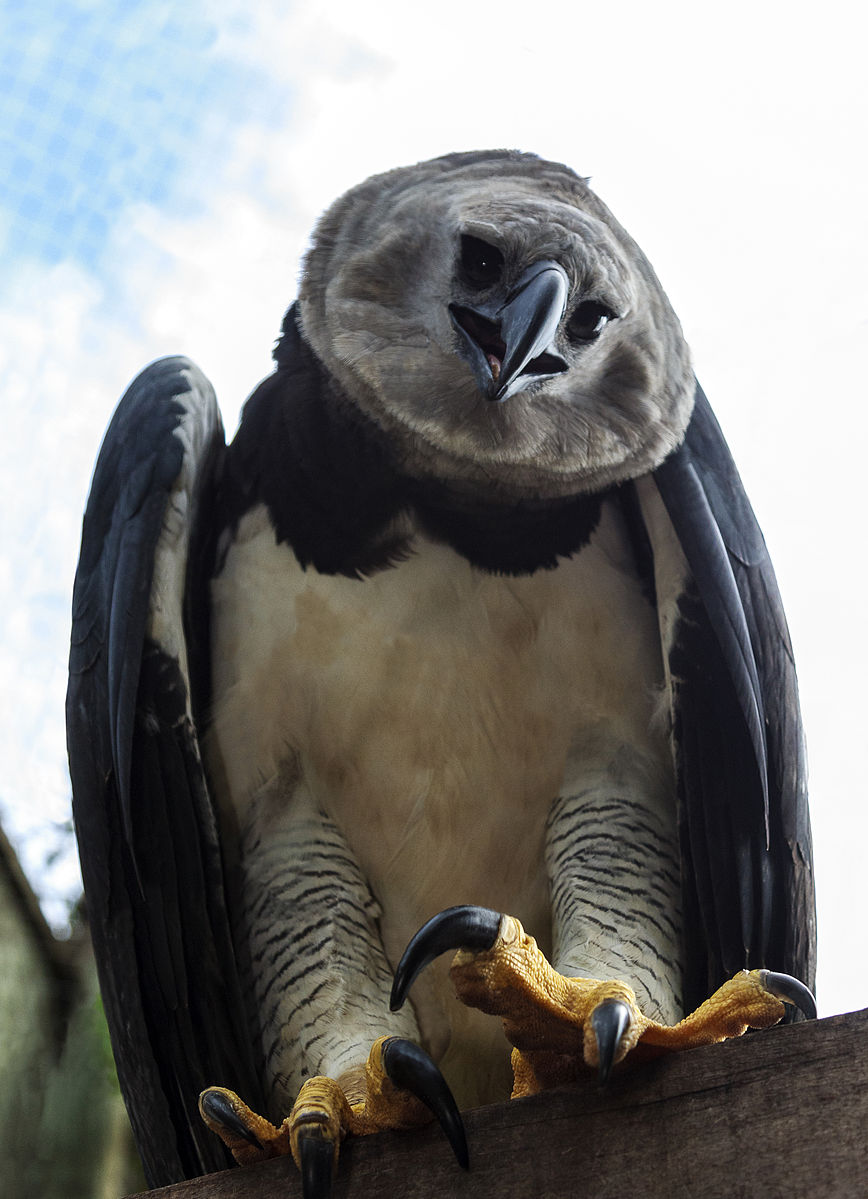Harpy eagles are known for their exceptional daytime vision, which is eight times better than that of humans. However, when it comes to night vision, these majestic birds of prey are not as efficient as some other avian species. In this blog post, we’ll explore the night vision capabilities of harpy eagles and uncover the fascinating details about their visual adaptations.
Harpy Eagles’ Daytime Vision Prowess
Harpy eagles are renowned for their incredible eyesight, which allows them to spot prey from great distances. They can detect objects as small as 2 centimeters (1 inch) from a distance of 200 meters (220 yards). This exceptional visual acuity is crucial for their hunting success, as they rely on their keen eyesight to locate and track their prey, which can include a variety of animals such as monkeys, sloths, iguanas, and even baby deer.
Harpy Eagles’ Night Vision Limitations
 Image source: Águia Harpia – Harpy Eagle by Jonathan Wilkins
Image source: Águia Harpia – Harpy Eagle by Jonathan Wilkins
While harpy eagles excel in daytime vision, their night vision capabilities are not as advanced. Research suggests that even humans have better night vision compared to these majestic birds of prey. Harpy eagles are diurnal, meaning they are active during the day and spend much of their time perched in high trees when they are not actively hunting or searching for food.
Facial Disk and Hearing Adaptations
To compensate for their limited night vision, harpy eagles have developed other sensory adaptations. They possess a facial disk composed of feathers that form a circle around their face, which can be lifted or lowered at will. This facial disk helps direct sounds to the birds’ ears, which are located on the sides of their heads. This trait is shared with owls and helps harpy eagles locate prey in low-light conditions using their exceptional hearing.
Hunting Strategies in Low Light
Despite their limitations in night vision, harpy eagles have developed effective hunting strategies to navigate the darker parts of the forest. They rely on their keen hearing and the use of their facial disk to pinpoint the location of their prey, even in the absence of strong light. Their agility and ability to maneuver between trees and branches allow them to successfully hunt in these challenging environments.
Varied Diet and Hunting Prowess
Harpy eagles are skilled hunters and have a diverse diet, preying on a range of animals that spend all or much of their lives in trees. They can effortlessly fly between trees and branches, showcasing their impressive size and agility. Their prey includes two-foot-long howler monkeys, 8-pound sloths, baby deer, iguanas, parrots, porcupines, coatimundis, raccoons, and even black vultures and foxes.
Conclusion
In summary, while harpy eagles possess exceptional daytime vision, their night vision capabilities are not as advanced as some other birds of prey. To compensate for this, they have developed specialized adaptations, such as their facial disk and enhanced hearing, which help them locate prey in low-light conditions. Despite these limitations, harpy eagles remain skilled and versatile hunters, capable of preying on a diverse range of animals that inhabit the treetops of their tropical forest habitats.


